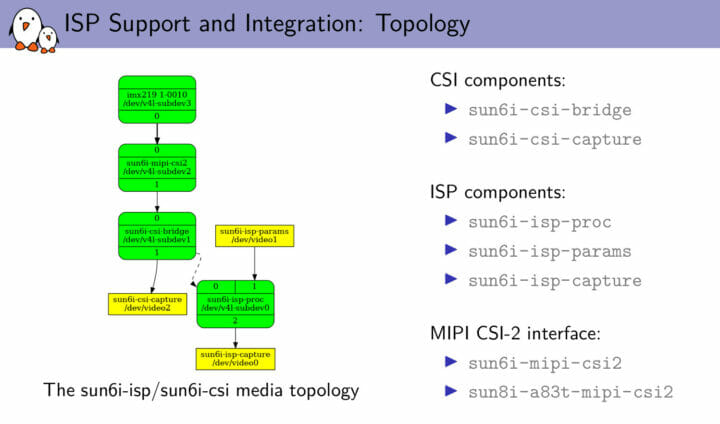Bootlin has just submitted the first patchset for the Allwinner V3 image signal processor (ISP) driver in mainline Linux which should pave the way for a completely open-source, blob-free camera support in Linux using V4L2.
There are several blocks in an SoC for camera support including a camera input interface such as MIPI CSI 2 and an ISP to process the raw data into a usable image. Add to this the need to implement the code for sensors, and there’s quite a lot of work to get it all working.
Allwinner SDK comes with several binary blobs, aka closed-source binary, but Bootlin is working on making those obsolete, having first worked on Allwinner A31, V3s/V3/S3, and A83T MIPI CSI-2 support for the camera interface driver in the V4L2 framework (and Rockchip PX30, RK1808, RK3128 and RK3288 processors), as well as implemented support for Omnivision OV8865 and OV5648 image sensors earlier this year.
Paul Kocialkowski has just published a blog post announcing initial support for Allwinner V3 “Hawkview” ISP in mainline Linux, and in combination with the earlier work we’ve just mentioned, the company was able to implement a proper V4L2 driver for the Allwinner V3’s ISP that is completely open-source, with no binary blob involved. You can check out the patchset submission thread for additional information. What may be missing is H.264 video encoding, since the company only got funding for developing H.264 and H.265 decoding on Allwinner processors, when the initiative for an open-source Allwinner VPU driver was introduced over three years ago.
Paul notes that the currently proposed Allwinner ISP driver only supports debayering with coefficients and 2D noise filtering, which represent only a subset of the 8M Hawkview ISP which, according to Allwinner V3 datasheet, supports spatial de-noise, chrominance de-noise, zone-based AE/AF/AWB statistics, black level correction, lens shading correction, color correction, and anti-flick detection statistics.
Nevertheless, the currently implemented features were sufficient for Bootlin use case, and they consider adding statistics support in order to implement 3A algorithms (auto-focus, auto-exposition, and auto-white-balance) needed for automatic configuration of scene-specific parameters. Support for these may eventually end up in libcamera open-source library.
Paul also happens to have given a talk about “Advanced Camera Support on Allwinner SoCs with Mainline Linux” at the Embedded Linux Conference 2021 earlier this week, so you may want to check out the presentation slides if you are interested in the details. The ISP-specific part starts on page 35.

Jean-Luc started CNX Software in 2010 as a part-time endeavor, before quitting his job as a software engineering manager, and starting to write daily news, and reviews full time later in 2011.
Support CNX Software! Donate via cryptocurrencies, become a Patron on Patreon, or purchase goods on Amazon or Aliexpress





